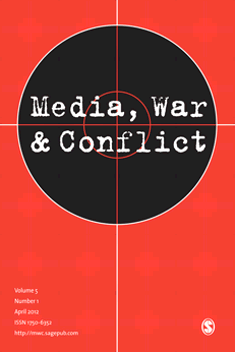Akil Awan writes for The National Interest on the Charlie Hebdo attacks, radical religion, and the failed promise of the French Republic's national narrative:
The masked gunmen who assaulted the Charlie Hebdo offices in a hail of automatic gunfire, leaving twelve people dead in their wake, were heard proclaiming, "we have avenged the Prophet Muhammad." Amateur footage also revealed the killers invoking God with the Arabic phrase, “Allahu Akbar”—an otherwise-innocuous, everyday religious utterance, but one that is frequently usurped as the jihadists’ battle cry, in pointed attempts to consecrate their brutal violence.
What should we make of the killers’ sanctimonious declarations that they were in fact acting in defense of their holy figure—a reference to the magazine’s irreverent and controversial depictions of the Muslim prophet?
How might we reconcile their claim that they were exacting vengeance on behalf of all Muslims for these apparent affronts, when at least two of their victims were also Muslims?
Both Ahmed Merabet, the police officer callously executed at point-blank range on the pavement outside the offices, and Mustapha Ourrad, Charlie Hebdo’s copy editor, shared the faith of their killers.
Perhaps most importantly, how should we react to their self-righteous assertions to be the supreme moral arbiters of Muslim religious sensitivities and sanctities?
A good start would be to treat their self-aggrandizing claims with the ridicule that they deserve.
One inescapable and glaring incongruity with the claims of these “religious avengers” is just how religiously illiterate the vast majority of these individuals actually are. This is particularly true of Western Muslims, who have been lured to fight for ISIS, or who have carried out attacks at home. Most are not particularly religious prior to their involvement with violence, being raised in largely secular households, with only a rudimentary grasp of their parental faith.
Nevertheless, one of the stubborn enduring myths surrounding jihadist terrorism has been the preeminence of religion over other motivations, and it is easy to understand why this might be the case. Many of these individuals themselves employ starkly religious language, and invoke religious texts that promise “other-worldly” rewards as compensation for “this-worldly” sacrifice, including the guarantee of eternal Paradise, and most famously, the lascivious offering of seventy-two heavenly virgins.
But, crucially, in many of these instances, we have to be aware of the post-hoc attribution of religious meaning and validation to their acts. To put it differently, religion does not provide the initial motive, but it does provide the motif or stamp of approval. Take the example of a young man who wants to go to Syria to fight for any reason that is not explicitly religious. It is not enough to just fight and even die like a jihadi, but to be accepted by that community (and indeed not to end up beheaded as a member of a rival group), you need to walk, talk and behave like one of them, too. The highly stylized “martyrdom testaments” suicide bombers record prior to their deaths are a very good example of this sort of conformity—it is no accident they all look and sound pretty much the same.
One recent telling example of this sort of religiosity tacked on at the end is the case of Mohammed Ahmed and Yusuf Sarwar, two young British men from Birmingham who were jailed for travelling to Syria to join and fight alongside a jihadist group in 2013, in response to what they saw as their religious duty. But it was the reading material they purchased to accompany them on their trip, the books, Islam for Dummies and The Koran for Dummies, which are most revealing about their lack of religious literacy and motivation.
And this characterization appears to hold equally true for the violent men who attacked the Charlie Hebdo offices. The Kouachi brothers, as orphaned children of Algerian immigrants, were raised in foster care, and certainly not as pious Muslims. Rather, as the French newspaper Libération reported back in 2005, Cherif led a decidedly nondevout and hedonistic lifestyle—smoking marijuana, drinking alcohol, listening to gangster rap and having numerous girlfriends. Indeed, during his trial in 2008 for helping to transport jihadist fighters from France to Iraq, Cherif’s lawyer described his client as an “occasional Muslim.”
Now, this is not to exonerate religion in any sense. Religion has historically been responsible for a great deal of violence, and religious texts and doctrines often appear to condone death and destruction. However, unlike believers, academics tend to understand religion as a product of social, economic, political and other factors that offer solutions to something.
So what does religion offer a solution to, in the case of Europe’s jihadists?




